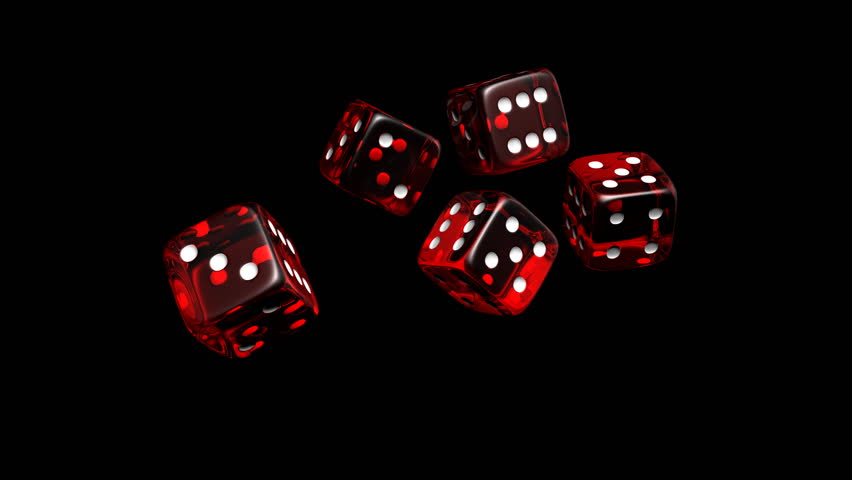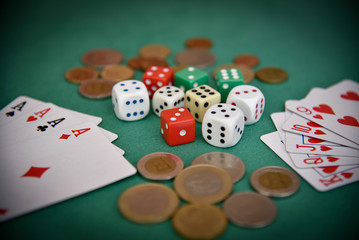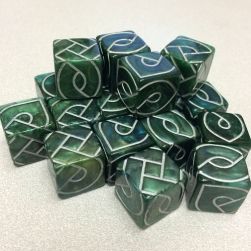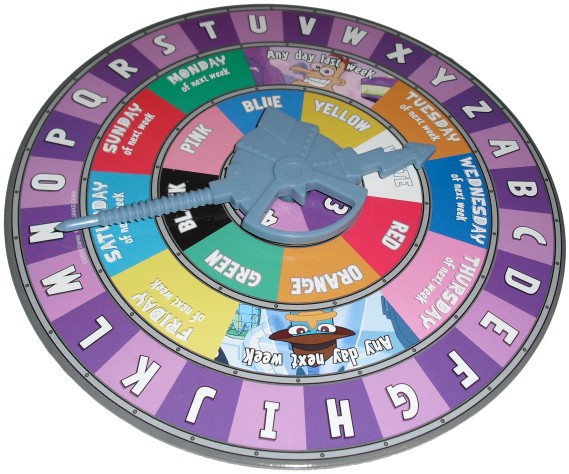Take a Chance: The Illusion of Randomness in Games
Randomness is a very important part of many games, but can also be very misunderstood. The appearance of randomness can often be just as important as the actual randomness. This article looks at how randomness is perceived by players.

The following article is a reproduction, and was originally posted on September 23, 2017. The original post, and many others, can be found at http://RemptonGames.com

Randomness is one of the most important elements of almost any game, and also one of the most misunderstood. Randomness can have a huge impact both on the design and experience of a game, and can lead both to very exciting moments and very frustrating ones. This is a huge topic, and one that I will probably write many articles about over time. Today, however, I want to focus on one particular feature of randomness in games – namely, the appearance (or Illusion) of randomness.
A Random Introduction
When done well, randomness in games can be a very important design tool. It can add replayability by making each different play of a game feel unique, and it can add strategic depth by forcing players to react to unseen situations. However, when used poorly, randomness can create the illusion that players have no control over their own actions. Having the game hinge on rolling a dice or drawing a particular card might be exciting once in a blue moon, but if it happens almost every game players are sure to become dissatisfied.
As with many things in life, however, perception can be just as important as reality. If a player feels that a game is too random or “swingy”, that can completely ruin their play experience, even if the amount of randomness isn’t actually that severe. Players are humans and humans, as a rule, are not designed to quickly calculate probabilities off the top of their heads. Therefore it is important not just to actually give your players choices, but to make them feel that they are in control.

One classic example of this is the Star Wars Trading Card game, produced by Wizards of the coast from 2002 – 2005. This game had a number of innovative gameplay mechanics, including imitating the classic Star Wars battle with simultaneous space battles, ground battles and one-on-one duels. Despite this, however, the game received a lot of criticism for being “too random” due to it’s use of dice to determine a number of different factors, including damage.
Rolling dice in card games is nothing new, so why did Star Wars in particular get so much criticism for this feature? According to Mark Rosewater, co-designer of the game, the main issue was with the number of dice rolled. Instead of rolling a single die and getting a value from that, each card would often roll several die. In addition, more powerful cards often rolled more dice than weaker cards, which created a feeling of “swingyness”. To the players more dice meant the results was more random, and with some cards rolling upwards of 10 dice the game could feel incredibly “swingy” – with the advantage swinging wildly based on the roll of the dice.
What players missed, however, is that rolling multiple dice actually creates less randomness, not more. How can this be? Well, for a single roll of a standard, fair, 6 sided dice, each outcome (1 – 6) has an equal probability. Add a second dice and this is no longer the case. Yes, you have a wider range of possibilities (2 – 12 instead of 1-6), but your probabilities are no longer equal. Yes, you could still get unlucky and only roll a 2, but your odds of that are only 1 in 36. Your odds of rolling a 7, however, is 1/6 – six times as likely!
Long story short, the more dice you add the more likely you are to roll in the middle and the less your chances are of getting a very high or very low roll that is going to shift the outcome of the game. Even so, what mattered to the players was not the statistical probabilities, but their perception. Ironically, only rolling a single die would have been much more random but probably would have felt a lot better for the player.

Pick your poison
The Icons of Randomness
In the effort of reducing the feeling of randomness in games, it is important to not that not all kinds of randomness are created equal. Randomness can come in a number of different forms, but some of the most common are dice, coins, spinners, decks of cards and, recently, bags of objects. Each of these “icons of randomness” can create a different feeling from your players, so which one you use should be chosen with care.
Cards
Cards are one of the most common forms of randomness in games, and also one of the most useful. Players are generally familiar with the idea of a randomly shuffled deck of cards, and having them draw from such a pile will usually not cause any complaints. Cards are especially useful because designers and players are both able to modify the contents of a deck of cards. This is useful for designers because they can have exactly the number and mixture of options that they need, and is useful for players if the game allows them to affect or modify the deck because it helps enforce their feeling of control.
Cards are also nice because they can give the players choices. One of the main ways to use cards for randomness is by dealing each player a hand of cards from shared or individual decks. Although the player may have no control over what cards end up in their hands, they are able to see and respond to what they are given.

Of course, cards can still be misused…
One interesting thing about cards is that they are one of the few kinds of randomness that is actually vastly underestimated. Players often don’t realize just how random a particular deck of cards can be, but the possibilities are usually incredibly high. In fact, the number of possible combinations for a standard 52 card deck is 52! (factorial), which is over 8 * 10^67 possible combinations. For comparison, there are an estimated 1 * 10^24 stars in the observable universe, and that doesn’t even come anywhere close.
Dice
Dice can also be a very useful too because they are one of the easiest ways of creating a fixed, unchangeable probability. While the size and composition of a deck may change over time, the number of sides on a die is going to remain pretty much fixed. However, this can be a both a blessing and a curse.
Dice are one of the most recognizable forms of randomness, and are strongly associated with casinos and gambling. Because of this, designers should be careful when and how they use dice in their designs. The randomness created by dice is very visible, and can be felt very strongly by players. When used for relatively trivial matters dice rolling can feel like a waste of time, but when used for very important moments they can create extreme tension and suspense.
The ability to create moments of suspense can be a bit of a double edged sword. On one hand, games are about emotionally engaging players and these moments can be very engaging. On the other hand, if used too often these moments can lose their appeal, and can make it feel like the players actions are unimportant. One way to somewhat reduce the illusion of randomness created by rolling many dice is to give the players a choice of what to do with them. One example of this is King of Tokyo, which allows players to choose which dice to keep and which to re-roll, up to a maximum number of rolls.
Another benefit of dice is that they are a very commonly used component, and come in a number of standards sizes and shapes. This is beneficial from a design and manufacturing perspective because it means that they can often be produced relatively easily, barring some sort of custom printing or unusual shape.
Finally, dice have many uses besides their ability to create randomness. They can be stacked on top of eachother to create structures, or they can be used to keep track of pieces of information via the numbers on their faces. There are even some games that use no components other than dice! All in all, they are very versatile game components that can be used for a number of different things.

*gasp*
Spinners
Spinners work similarly to dice, in that they can be used to create a fixed, unchangeable set of probabilities. Spinners also have the advantage that not every portion of the spinner necessarily needs to be the same size, so it’s possible to have some options come up much more frequently than others. In addition, the number of possible options on a dice is relatively limited (it usually must be constrained to one of the common dice shapes – 6 sided, 20 sided, etc). Another advantage spinners have over dice is the amount of information that can be conveyed on each option. Dice usually can only convey a single bit of information, such as a number, whereas spinners are more flexible.
Unfortunately, there are a number of factors that lead to spinners not being very common components of modern games. Firstly, spinners have an association with “casual” games, which can give off the wrong impression if you are trying to create a more serious game. In addition, it is not always clear what value a spinner is pointing to. This is fine in a relatively casual setting, but if the fate of the game rests on a particular spin it can be frustrating. Spinners also require more box area than dice or cards, and have other issues regarding the spinning mechanism itself (getting stuck, influencing spins, etc).

I hope I get a green k next friday!
Coins
Coins, although iconic, are not actually that useful as a form of randomization. They only have two sides, which means that they are only useful for binary decisions, and their size also means that they cannot convey much information. Coins are also relatively expensive to produce, often requiring custom molds.
The upside of coins is that, if included with the game, they can often be seen as very high end components. There are a number of games that include very beautiful custom coins, although in most cases they are used for something other than simply flipping. Also, most players probably have coins lying around the house so if your game does require coin flips, they don’t necessarily need to be included with the game itself.

An Aside on the Existence of Randomness
Because I’m talking about the “illusion” or perception of randomness, I thought I would finish off by talking about the existence of randomness itself. This might get a little into the weeds, so feel free to skip this part if you want.
Basically, there are two main ways to think about randomness. The first way is to think about it in terms of information. Basically, if you cannot determine what outcome is going to occur based on the information that you currently have, then the system can be considered random from this perspective.
The problem with this definition of randomness is that, in many cases, the outcomes could be determined beforehand if you had enough information about the starting conditions. Random number generators in computers, for example, may seem like they produce purely random results. In reality, however, these results are only “psuedo-random”. The numbers that are generated by these algorithms are not truly random, and with enough information patterns can be detected. These algorithms have become sophisticated enough that the patterns would be nearly impossible to detect, but that doesn’t mean they aren’t there.
In the same way, any roll of the dice or flip of the coin can be predicted if you have enough information about the starting conditions. Even more importantly, these types of physical randomness generators can be manipulated by skilled players to improve their odds. Finally, due to the fact that they are physical objects these forms of randomization are rarely perfectly fair to begin with – most dice, for example, have a statistically significant bias towards landing on lower numbers (especially 1) because of the unequal amounts of material that was removed to create the dots.
Until Next Week
That’s all I have for this week! If you enjoyed this article, you can help out the blog by sharing it with your friends using the social media buttons below. If you want me to write more about randomness in games, let me know in the comments, and feel free to subscribe to the blog here on WordPress, Facebook, or Twitter so you will always be informed when I post a new article. And join me next week, where I will be diving deep into the ancient history of game design.
Community Questions of the Week
Are there any other aspects of randomness in games that you would like me to write more about?
What are your favorite “ancient” games, and what do you love about them?
What other game design topics do you think I should tackle next?
Read more about:
BlogsAbout the Author(s)
You May Also Like







.jpeg?width=700&auto=webp&quality=80&disable=upscale)








